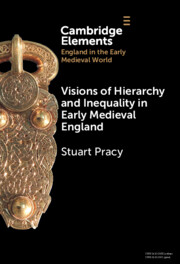Element contents
Visions of Hierarchy and Inequality in Early Medieval England
Published online by Cambridge University Press: 06 January 2025
Summary
- Type
- Element
- Information
- Online ISBN: 9781009308342Publisher: Cambridge University PressPrint publication: 16 January 2025

